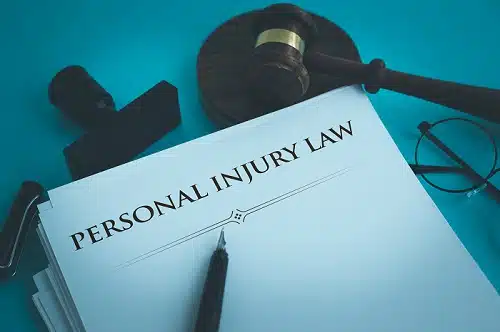What is Negligence?
Typically, personal injury claims are based on negligence. A person is negligent when they fail to uphold their duty to act as a reasonable and prudent person. Their failure to act in accordance with the reasonable and prudent person standard then caused an accident, which resulted in another’s injury.
To be found liable for negligence, the plaintiff must establish four elements. The plaintiff must establish that the defendant had a legal duty to the plaintiff to use reasonable care. The defendant then breached that duty by failing to act as a reasonable person should. The defendant’s breach of duty caused injury or harm and the victim suffered injury or losses that may be compensated by recovering monetary damages.
Negligent conduct most often involves an action, such as hitting a pedestrian in a crosswalk or running a stop sign. But negligence also encompasses inaction, in other words, a failure to act, which could include a building owner who does not fix a crack in the sidewalk or who negligently fails to remedy a hazardous condition that could injure a customer.

Duty of Care
The first element to consider in a negligence case is whether the defendant owed the plaintiff a duty of care. Sometimes a duty to act is mandated by law. Although most people, in most circumstances, are required to maintain the duty of ordinary care. This means they have to act like reasonably prudent people would under the same or similar circumstances.
When evaluating whether a defendant acted reasonably in a particular situation, a jury considers what the average person would have done in the situation. The jurors then compare the defendant’s conduct to that of the “reasonable person.” If the defendant’s conduct does not meet the reasonable person standard, they may find that the defendant was negligent. The defendant’s mental deficiencies and inexperience are not considered when determining if the defendant acted reasonably. For example, a driver who has just begun driving will be expected to act just as an average driver on the road would. However, a defendant who has knowledge or experience superior to that of an average person is required to exercise that knowledge and experience.
Further, there are circumstances where the defendant is held to a heightened standard of conduct. For example, a professional or someone with unique occupational skills is required to have the knowledge and skill of a member of the profession or occupation.
Cause-In-Fact
Another important element of negligence is causation. To hold the defendant responsible for an injury based on negligence, the plaintiff must prove that the defendant’s actions were the cause-in-fact of the plaintiff’s injury. To establish that the defendant’s actions were the cause-in-fact of the injury, the plaintiff must establish that the plaintiff’s injury would not have occurred without the defendant’s act.
If the plaintiff is unable to establish a causal link between their injury and the defendant’s actions, the defendant will not be liable for the plaintiff’s injuries. Therefore, courts use cause in fact to examine the choices made by the defendant.
Proximate Cause
After establishing that the defendant was the cause-in-fact of the injury, the plaintiff must prove that the defendant’s breach of duty was the proximate cause of the harm suffered by the plaintiff. To establish the defendant’s actions were the proximate cause, the plaintiff must prove that her injury was directly caused by the defendant’s act and was a reasonably foreseeable result of the defendant’s act. In New York, this means that the plaintiff can only seek damages if negligence is a substantial factor in causing the incident that led to the injury. It does not have to be the only factor—it just has to be a substantial one.
Damages
To be compensated for a personal injury claim, you must have sustained damages. Damages may include lost wages, personal care costs, medical bills, and travel expenses. Also, they may include damages such as pain, suffering, disabilities, or disfigurement.
To ensure that you’re properly reimbursed for your injury, it’s important to keep detailed records of your financial losses and personal losses. This includes time taken off from work or instances where you couldn’t participate in an activity you once enjoyed.
Types of Negligence Cases
There are many cases that involve one party acting negligently. Examples include:
•Accidents involving motorcycles
•Slip and fall accidents
•Car accidents
•Product liability claims
•Accidents involving trucks
•Premises liability claims
•Accidents in the workplace
•Dog attacks and dog bites
•Accidents on a construction
•Wrongful death cases
•Injuries to children when left with caregivers or in facilities
Cases involving personal injuries often involve legal allegations such as strict liability, negligence per se, or assumption of risk. Therefore, it’s important to contact your lawyer so that they may determine what law is applicable to your case.
Statutory limitations
In New York, an individual has three years from the date of the accident or injury to file a claim. However, there are exceptions to the general rule that may shorten your opportunity to file a claim.
Therefore, it is important to contact a personal injury attorney if you believe you were injured as a result of someone’s negligence. Reach out to TonaLaw for assistance as soon as you notice you are hurt. We will guide you through every step of the process.
Schedule a free, confidential, no-obligation case review when you call 833-866-2529 (833-TONA-LAW) or contact us online.